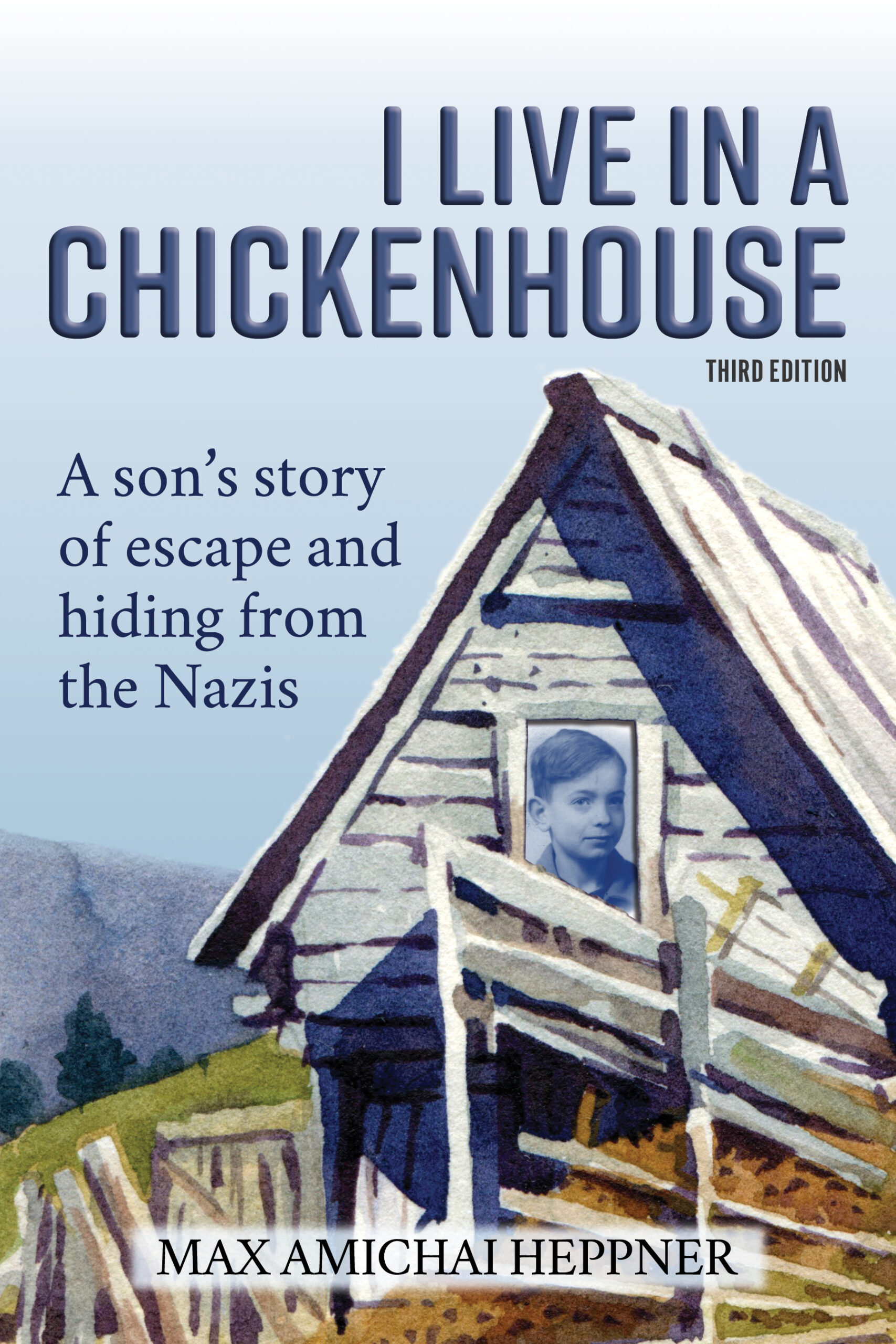 Title: I Live in a Chickenhouse: A son’s story of escape and hiding from the Nazis
Title: I Live in a Chickenhouse: A son’s story of escape and hiding from the NazisAuthor(s) Max Amichai Heppner
Published by: Heppner Books“Everyone I know blames the Nazis for everything bad that’s happening in Europe. If [my foster mother] Dina is right, do the Allies also deserve some of the blame?”
—Max Amichai Heppner, November 1943As a young nine-year-old, Max Amichai Heppner expressed his feelings in his art as he hid from the Nazis in a chickenhouse. He presents these drawings and the thoughts they rekindle in his book I Live in a Chickenhouse. Heppner gives readers a vivid sense of what it was like to live in the midst of a political storm—a situation that young Max could hardly comprehend at the time.
Along with his parents, Max was shuttled from location to location until they finally found a family willing to risk their own lives to save them. For almost three years, the families lived in a chickenhouse on a remote farm in a corner of the Netherlands. Max records his daily life there, a stark contrast to his former life in urban Amsterdam.
Max describes the slow breakdown of life in Amsterdam as the German occupation transformed the city and placed many restrictions on Jews. He relates losing his toy “Beary-Bear” in the turmoil, and he draws the toy he carves to replace it. He recalls how the children of his foster family brought home food from their school lunch to lessen his hunger. And he tells of his challenge to create peace between his family and another Jewish couple hidden with them in the chickenhouse.
Through Max’s voice, I was able to have a global vision of the actions and reactions of the brave and resourceful individuals who, despite the danger, acted with love, generosity, and hope.
—Meredith Rubenzahl, JD, M.A., Next Generation Council for the USC Shoah Foundation, World History Educator
ISBN13: 978-1734895322
Recent Comments